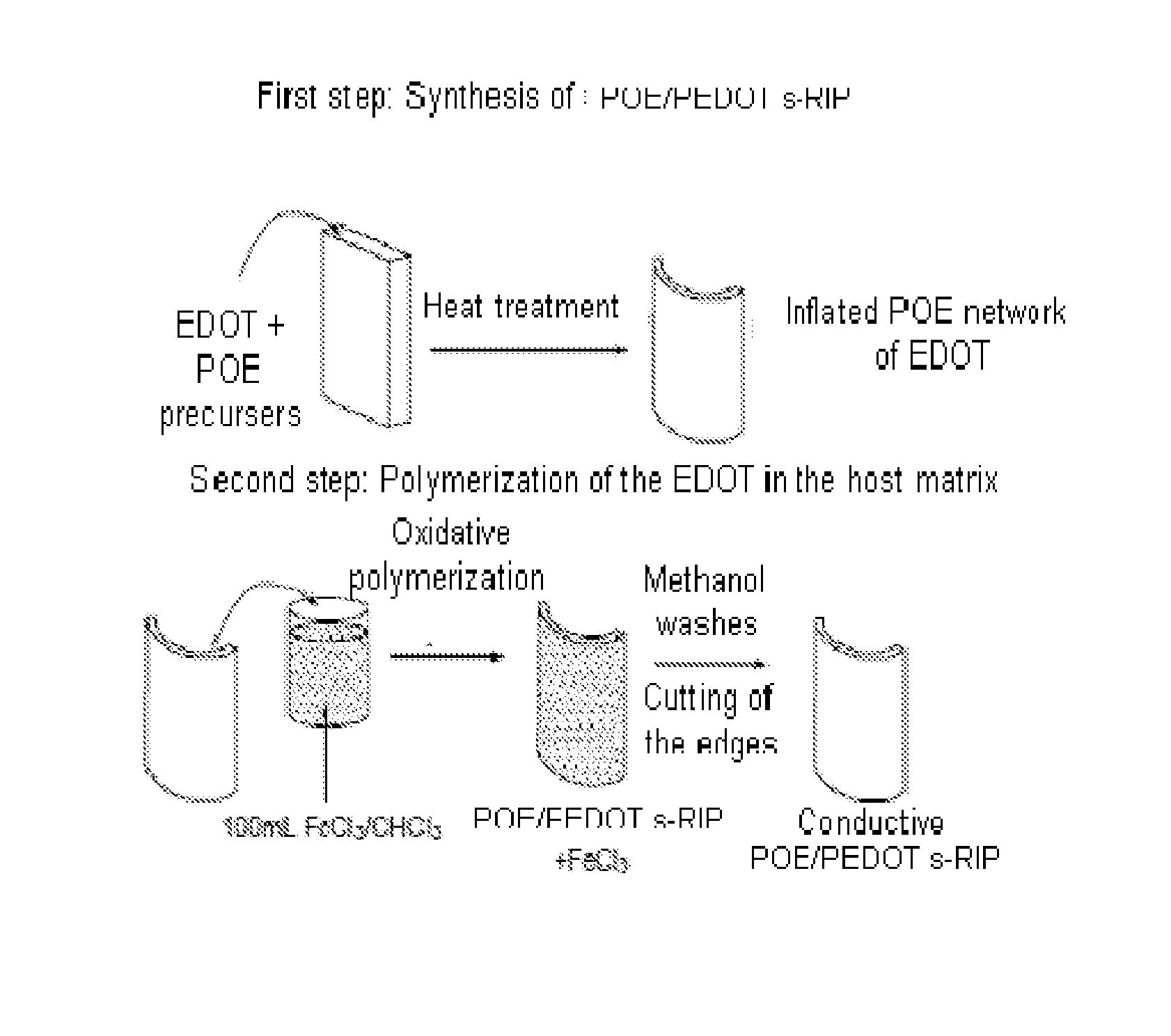Radiative surface
a technology of radiative surface and surface, which is applied in the direction of recording information storage, transportation and packaging, instruments, etc., can solve the problems of inability to modulate, not being able to adapt to the changes of environment, and material entails applying high temperatures, so as to improve the flow of electrostatic charges, improve the effect of radiative surface, and improve the effect of heat control
- Summary
- Abstract
- Description
- Claims
- Application Information
AI Technical Summary
Benefits of technology
Problems solved by technology
Method used
Image
Examples
Embodiment Construction
[0059]FIG. 1 represents the steps of formation of an interpenetrated network and of a semi-interpenetrated network. FIG. 1a represents a homogeneous mixture in solution of monomers comprising a monomer 1 and a monomer 2. FIG. 1b represents a first three-dimensional network R1 of a polymer comprising monomers 1, the three-dimensional polymer network R1 being inflated with a solution comprising the other monomers 2. FIG. 1c represents the first network R1 and a second polymer network R2 comprising the monomers 2. The first network R1 and the second network R2 are tangled together to form an interpenetrated network or RIP.
[0060]It is possible to produce an interpenetrated network sequentially in two steps: a first step of formation of a first network and a second step of formation of the second network. Alternatively, it is possible to produce an interpenetrated network in a single step of formation of the first and second network.
[0061]FIG. 1d represents a semi-interpenetrated network...
PUM
| Property | Measurement | Unit |
|---|---|---|
| Time | aaaaa | aaaaa |
| Thickness | aaaaa | aaaaa |
| Thickness | aaaaa | aaaaa |
Abstract
Description
Claims
Application Information
 Login to View More
Login to View More - R&D
- Intellectual Property
- Life Sciences
- Materials
- Tech Scout
- Unparalleled Data Quality
- Higher Quality Content
- 60% Fewer Hallucinations
Browse by: Latest US Patents, China's latest patents, Technical Efficacy Thesaurus, Application Domain, Technology Topic, Popular Technical Reports.
© 2025 PatSnap. All rights reserved.Legal|Privacy policy|Modern Slavery Act Transparency Statement|Sitemap|About US| Contact US: help@patsnap.com



